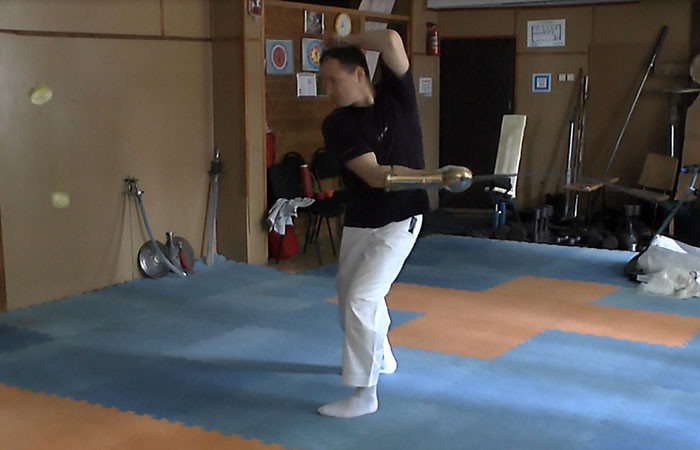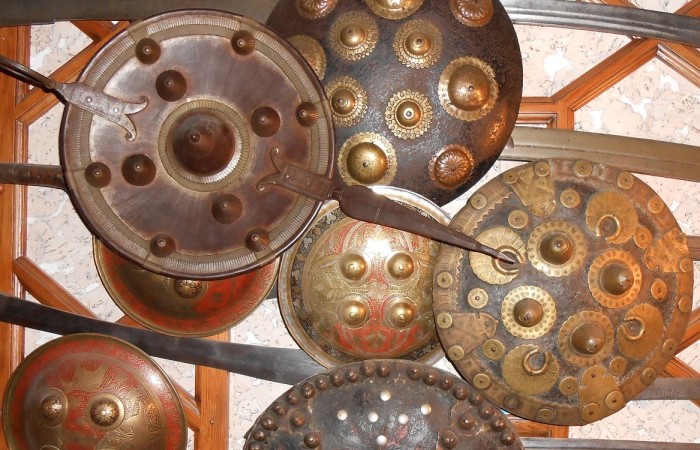Weapon mastery: differences between practical swordsmanship and demonstration exercises
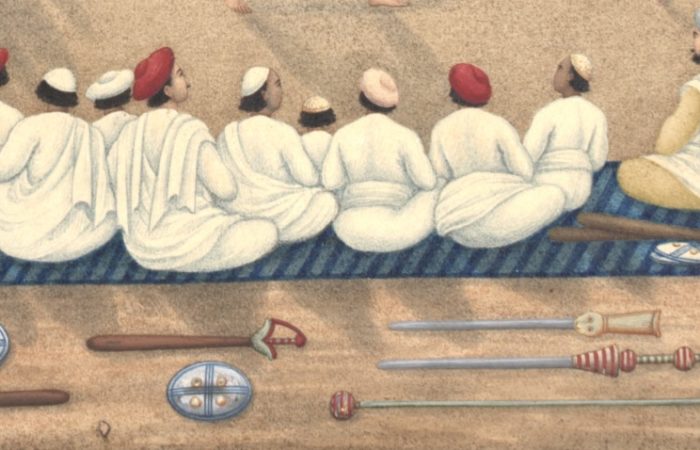
Indian modern martial arts with weapons are a mix, or rather, remnants of real swordsmanship, sports and entertainment exercises and a standard set of techniques for demonstration performances. It is important to emphasize that all these elements simultaneously existed in historical reality, represented a single system of warrior training and did not contradict, but complemented each other.
General principles
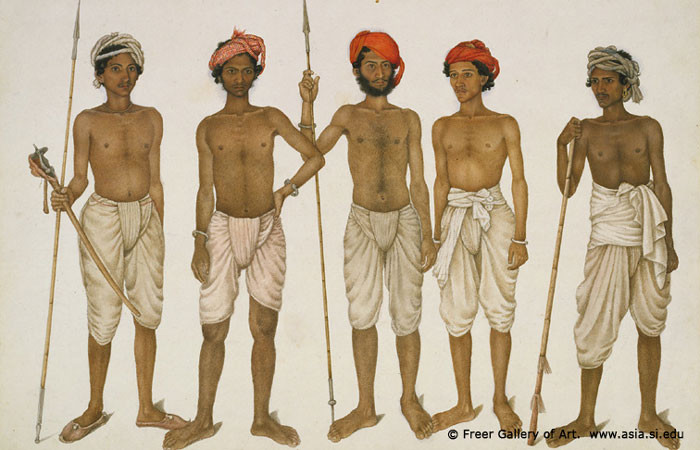
The purpose of the present section is to explain the main training methods and demonstrate how to reach practical benefits and effectiveness by studying of the weapon handling basic skills. Many detailed explanations were gained during the learning process in Rajasthan, some extra knowledge and skills I discovered directly during the practice, and the other is my personal opinion.
Basic technique of movements
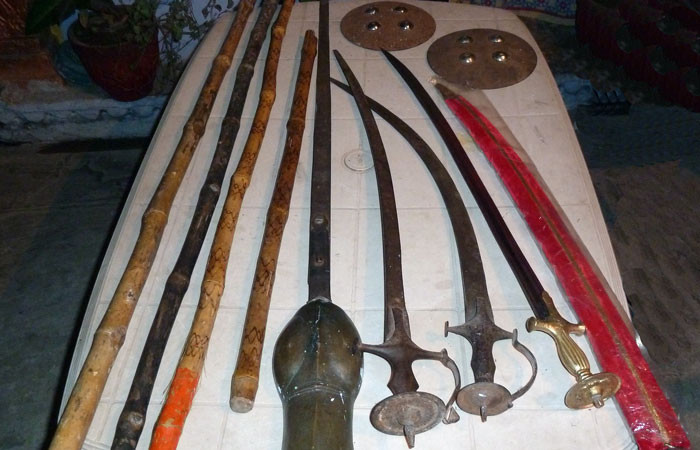
There is a technique known in North India as “pentra” in the basis of the method of movements. The role of pentra in this direction is that it is not a separate exercise, but the basic principle of movement with armed hands, which is always presented while being in motion.
Spear
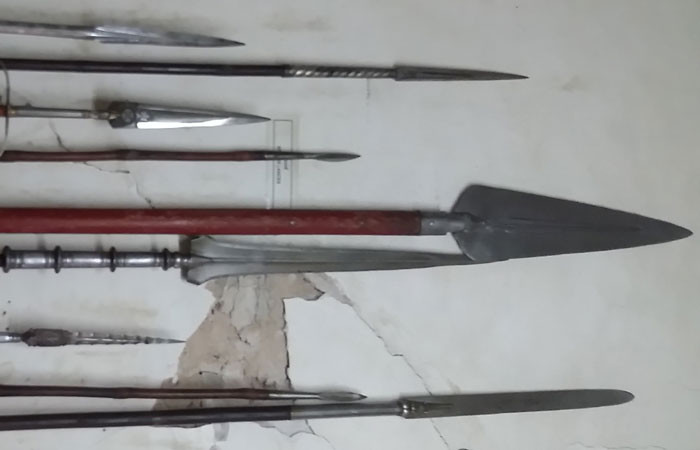
Within this direction the spear is primarily interesting not in itself, but as a trainer for fixing movement skill in pentra. Despite the fact that there are elements for exercises on horseback in the working technique with a spear, the basic principles are in correspondence with the handling the heavy spear by the foot soldiers. It is possible to visualize this type of weapon by its comparison with the size and balance of “scoop” shovel with a stalk of not less than 4 cm in diameter and up to 180 cm in length.
Staff
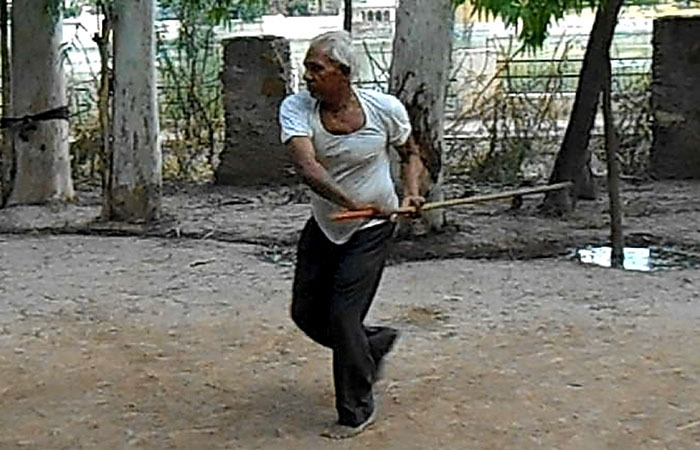
Like all Indian practices, proficiency in fighting with staff implies its usage while being surrounded by enemies. It causes the necessity for mastering the skill of free moving in any direction while spinning the weapon arbitrarily as well. Herewith it is necessary to mention two details. Spinning of the staff doesn’t depend on the direction of moving or direction of the turns of the trainee corpus.
Daggers
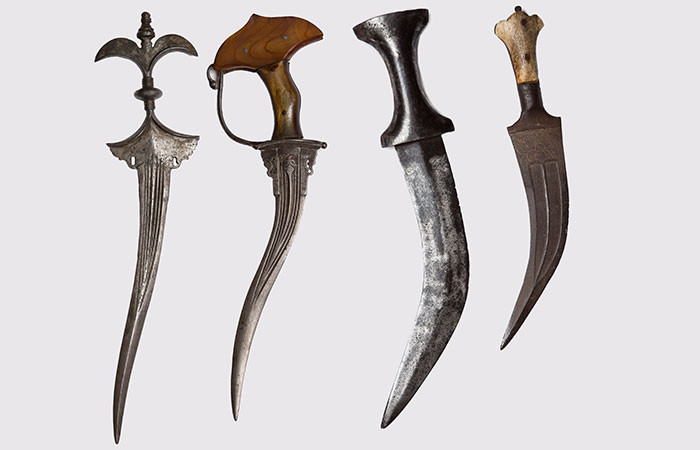
Despite the fact that exercises with daggers have been mentioned in sources since the beginning of the 18th century, practices did not have the independent martial value and were part of wrestling. Nevertheless, the practice with daggers still exists and is used for the same purposes as the others – to acquire stepping and moving skills.




